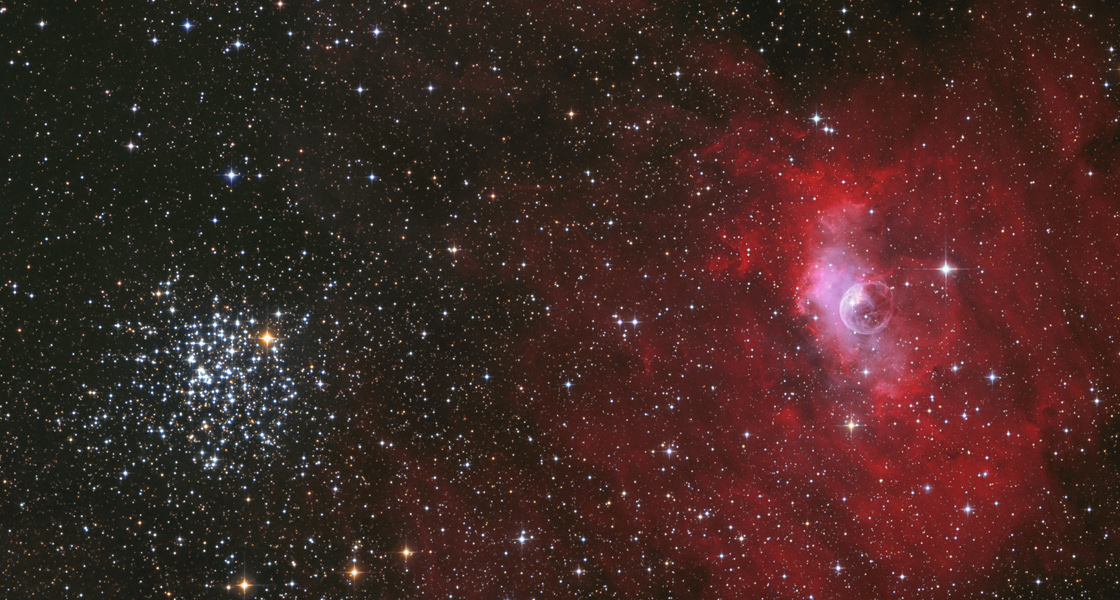Very nice APOD!!!

As you might expect, I have a complaint all the same, and of course it has to do with the color balance of the image and the "
orange mysteries" of it. To make you understand what I mean, let's compare today's APOD with an image from Wikimedia.
Please note two things here. The star to the right of the Bubble Nebula is blue in the picture at right, but white in today's APOD. More interestingly, the bright
orange star near the upper right edge of M52 that is so prominent in the picture by Lorand Fenyes is invisible in the picture at right, or at least we can't see any trace of orange there!
I'm going to ask you to compare today's APOD with an ESO image of cluster NGC 3293:
Note the prominent orange star in NGC 3293. Doesn't it appear to be much the same color as the bright orange star in cluster M52 in today's APOD?
Actually though, these two orange stars are quite different. The one in M52, SAO 20606, is a star of spectral class F8Ib/II, with a B-V index of +1.02. The orange star in NGC 3293 is a red supergiant of spectral type M1.5Iab-II, with a B-V index of around +1.8 or +1.9. These are very different stars, but the rather deep orange color of SAO 20606 in the APOD makes this F-type giant look like a much cooler M-type supergiant.
There is one other
orange peculiarity in today's APOD. Let's look at a closeup of cluster M52.
Note the number of small very orange stars scattered inside M52. What kind of stars are they? We expect only bright giant stars and very faint dwarf stars to be so orange. These orange stars are too faint to be giants and way too bright to be very faint dwarfs.
We must consider the age of M52. According to
Wikipedia, its age is 158.5 Myr. Hmm, that's a very precis age! But in any case it means that this cluster is quite young, and more or less comparable in age to
the Pleiades. There are no red giants in the Pleiades, and all the bright stars in the cluster of the Seven Sisters are blue B-type stars.
I'd argue that the intensely orange and relatively faint stars that we can see in M52 in today's APOD
can't be red giants. We know that more massive (and therefore brighter) stars evolve first, and a blue B-type star that turns into a red (super) giant will certainly not grow
fainter as it does so. It will either grow brighter or stay the same.
So here is what I think. Many of the very orange and relatively faint stars seen in M52 in today's APOD are background stars, which would explain their color and faintness. However, these faint orange stars seem more plentiful inside M52 than outside it, so I think that some of them are genuine members of the cluster. Then how do we explain their color and faintness?
We don't. I don't see how we can, if these stars are members of M52. So they must in fact all be background stars, or (most unlikely!!!) M52 must contain
two generations of stars. If so, the faint orange stars of M52 would be much older than the blue B-type stars, and they would be normal medium-mass red giants.
Yeah, right!!!!
Ann
P.S. Oh, and yes, I do think that today's APOD "saturates in orange", so that yellowish objects are made to look orange.
 The Bubble and the Star Cluster
The Bubble and the Star Cluster


